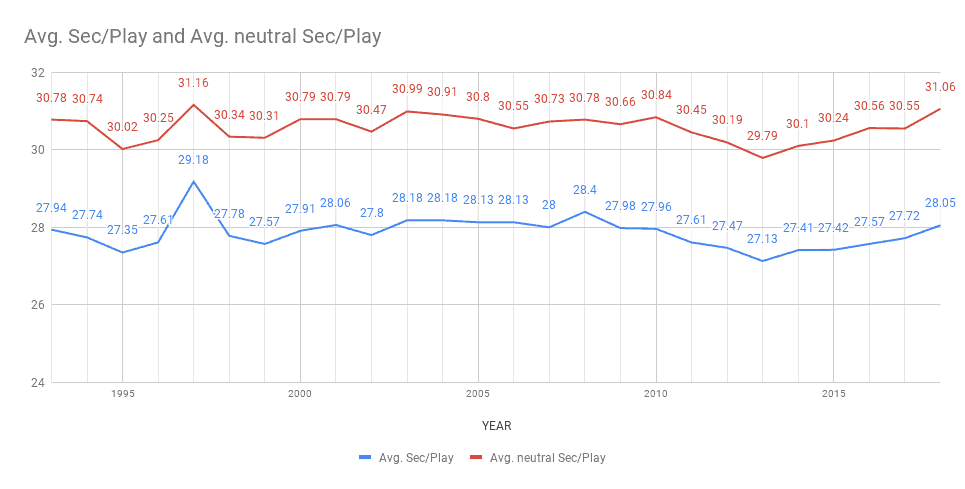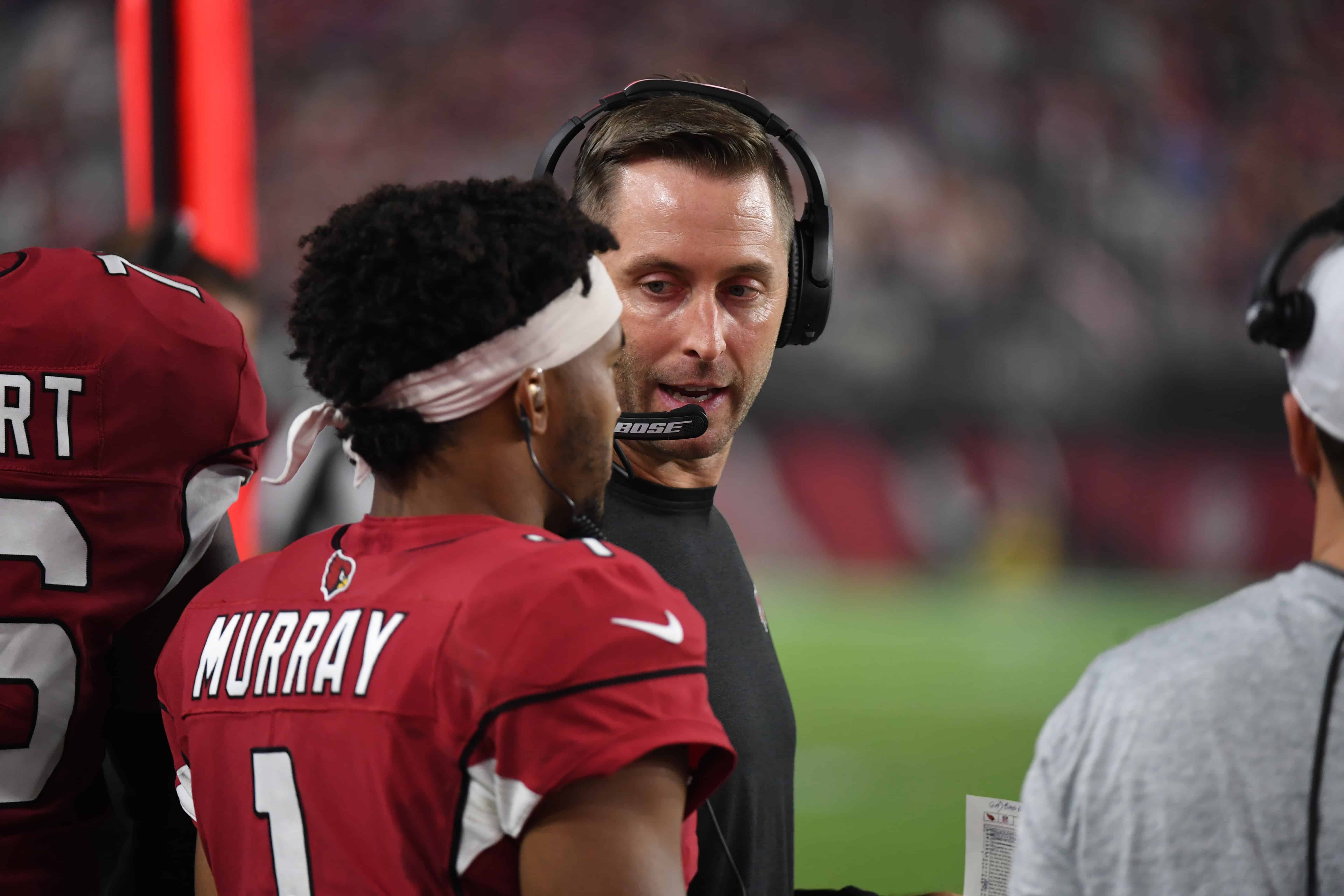When Chip Kelly came to the NFL as head coach of the Philadelphia Eagles, there was some thought he could change the league. There are still traces of Kelly around the league, from mesh to Y-Cross, but one of the biggest Kelly influences phased out when he did — pace of play.
Kelly’s first game with the Eagles against the Washington Redkins was a revolution that never fulled formed. The Eagles ran 53 plays in the first half and looked unstoppable. A Kelly coached team never ran that many plays in a half again and instead of leaving a mark on speed, the NFL has gone the other way over the past few seasons.
Pace went to the extreme in Kelly’s first season, but the NFL has gradually slowed in each season since. Per Football Outsiders’ pace stats, 2018 was the slowest season by averages seconds per play since 2008 and the slowest by average seconds per play in neutral situations (non-garbage time) since 1997.

source: Football Outsiders
All of Kelly’s teams, the Eagles and 2015 San Francisco 49ers, were wildly faster than the rest of the league and no teams really tried to keep up. Kelly’s 49ers led the league in average neutral situation seconds per play in 2015 at 23.94. The next season, the Ben McAdoo-led New York Giants had the top spot but were nearly five full seconds slower at 28.72.
Part of this stems from rules that don’t allow for a college-like pace at the NFL level. There is a rule that has been in place since 1989, per Football Zebras, that allows the umpire to stand over the ball to allow the defense to match offensive substitutions. It’s something that has been more apparent recently. More teams are running some version of a hurry-up or no-huddle (though not at Kelly speed) but the officiating crew has made sure the defense has enough time to match up.
These rules come into play when the offense makes personnel changes. That gives an advantage to a team like the Los Angeles Rams, who use not only the same personnel packages, but mostly the same players on the field for most of their snaps. The Rams did take advantage in 2018 — they were second in seconds per play in the first half and third in situation neutral seconds per play. However, the Rams did less traditional hurry-up than getting to the line quickly to allow Jared Goff and Sean McVay to communicate adjustments to the defense before the sideline-to-helmet radio system was turned off.
This is the SoundFX clip I mentioned earlier. Listen out for McVay calling the audibles in the headset before Goff calls them https://t.co/rvT76HnYNw
— Mark Bullock (@MarkBullockNFL) November 16, 2017
It should be noted that even while the league has gotten slower as a whole, some of the best teams are still the fastest among them. Last season’s six fastest teams in neutral situations were the Patriots, Colts, Rams, Buccaneers, Ravens, and Chiefs. Most of those teams used pace as a weapon early. The top-5 teams in seconds per play in the first half were the Patriots, Rams, Ravens, Colts, and Chiefs.
Two teams who really used the clock to their advantage were New England and Kansas City. The Patriots used that fast start, typically got out to an early lead, and slowed to the 20th fastest pace in the second half. The Chiefs were similar, slowing from fifth to 23rd in the second half.
The potential of pace could be pushed in 2019 with another incoming college coach — Kliff Kingsbury. Arizona running back David Johnson raised eyebrows earlier in the offseason when he said the Cardinals wanted to try to run 90 to 95 plays per game.
That’s probably not likely. Kelly’s teams never hit that mark in a single game and there have only been 66 instances with a team hitting 90 or more offensive plays in a game since the merger. No team has hit that mark more than once in a single season since the 1984 Chargers.
Still, the Kingsbury Cardinals could use pace as a weapon like Kelly did and more than even the most recent teams have. The question will be if that pace looks more like the Kelly era, will the rest of the league go with it or will the steady decline seen since Kelly left the league remain?
















